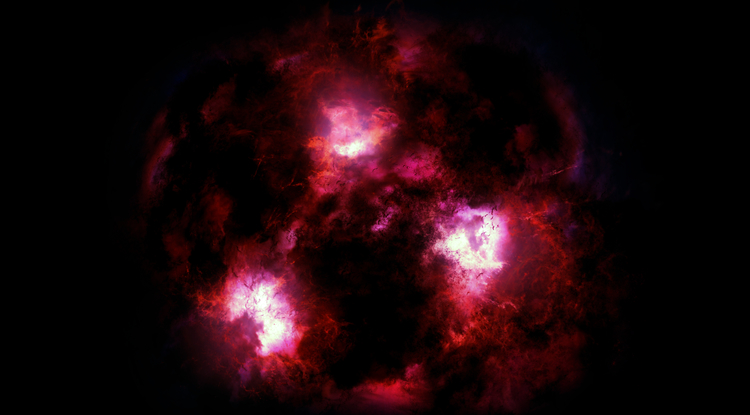
Astronomers have spotted evidence of a massive and ancient galaxy, so old and so large that they compared finding it to spotting a cosmic Yeti.
The Yeti hunt began when astronomer Christina Williams, a National Science Foundation postdoctoral fellow at the Steward Observatory, was looking through results from the Atacama Large Millimeter Array (ALMA) for another project. She spotted a strange blob of light that seemed to come from nowhere.
“It was very mysterious because the light seemed not to be linked to any known galaxy at all,” she said in a statement. “When I saw this galaxy was invisible at any other wavelength, I got really excited because it meant that it was probably really far away and hidden by clouds of dust.”
On further inspection, Williams and colleagues discovered they were looking at the remnants of a signal that took 12.5 billion years to reach Earth, meaning they were looking back at an event from the very early universe. The glow was formed as bright baby stars were born inside a young galaxy. Although giant clouds of dust obscured the galaxy itself, the glow of the stars illuminated the dust and lit it up.
The Yeti galaxy was extremely productive, creating stars nearly 100 times faster than our Milky Way. It could also offer the answer to the astronomical puzzle of why very large galaxies seem to mature so fast. Astronomers have seen massive mature galaxies, but they hadn’t seen massive galaxies growing before – it was as if they appeared fully formed.
“Our hidden monster galaxy has precisely the right ingredients to be that missing link,” Williams explains, “because they are probably a lot more common.”
In order to learn more about how many massive mature galaxies may be out there, Williams and her team want to take observations from more parts of the night sky. Their first study covered only a very small sliver of the sky, and to find more monster galaxies they will need to search many more areas.
For this purpose, Williams is eagerly awaiting the launch of NASA’s James Webb Space Telescope (JWST) which will be able to see further and in greater detail than any telescope currently available. “JWST will be able to look through the dust veil so we can learn how big these galaxies really are and how fast they are growing,” she said, “to better understand why models fail in explaining them.”
The findings are published in the Astrophysical Journal.
Editors' Recommendations
- Astronomers simulate the early universe and the birth of the first galaxies
- Astronomers want your help to find cosmic jellyfish galaxies
- Baby gas giant discovered wandering far from its parent star
- Monster galaxy from the early universe lived fast and died young
- Stellar fight to the death illuminates unusual star life cycle




